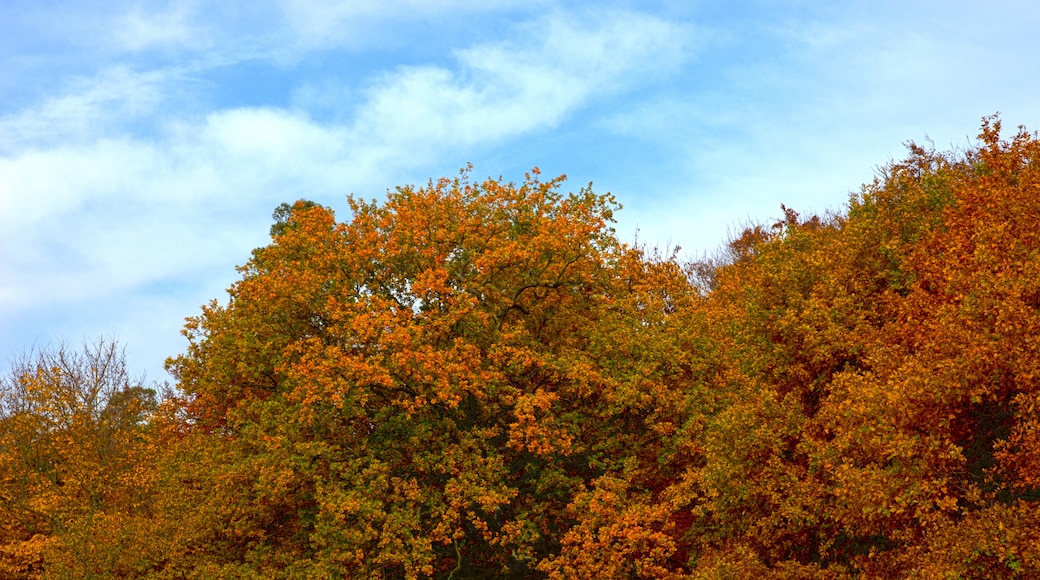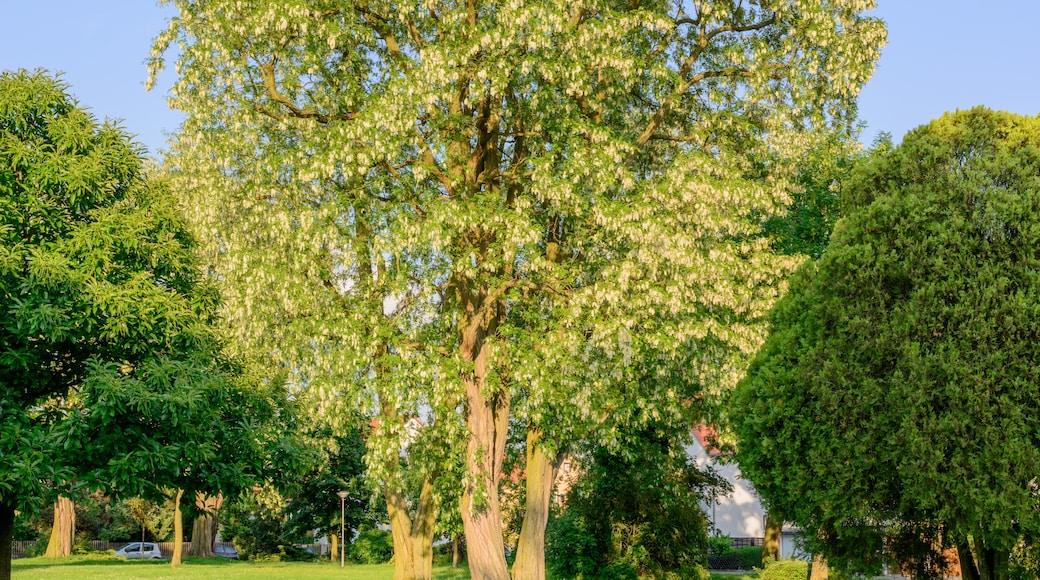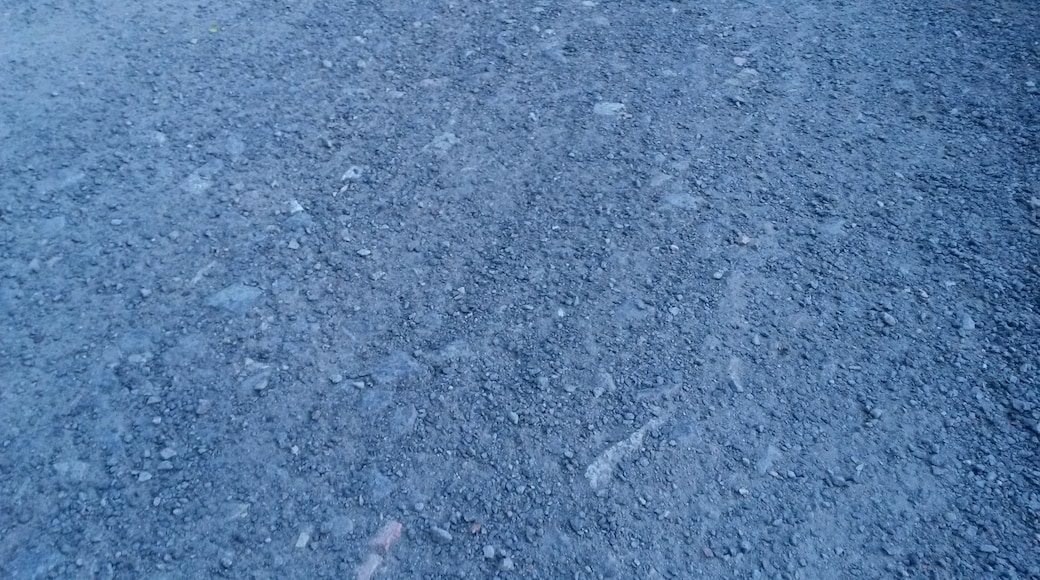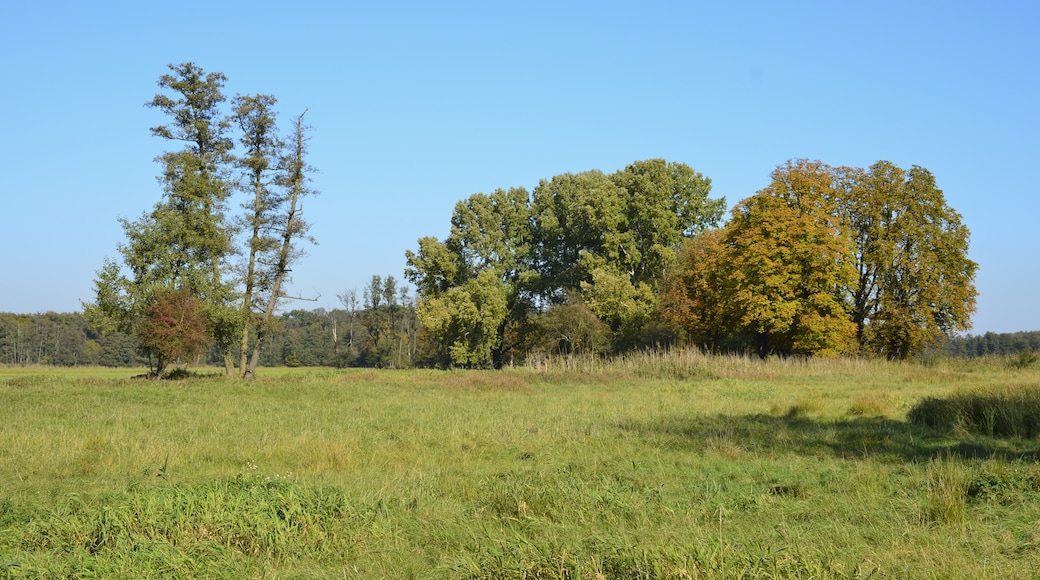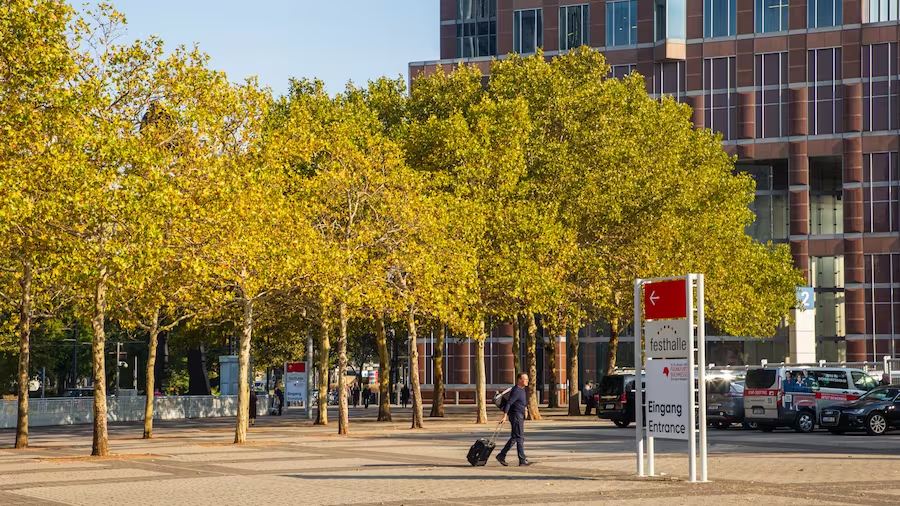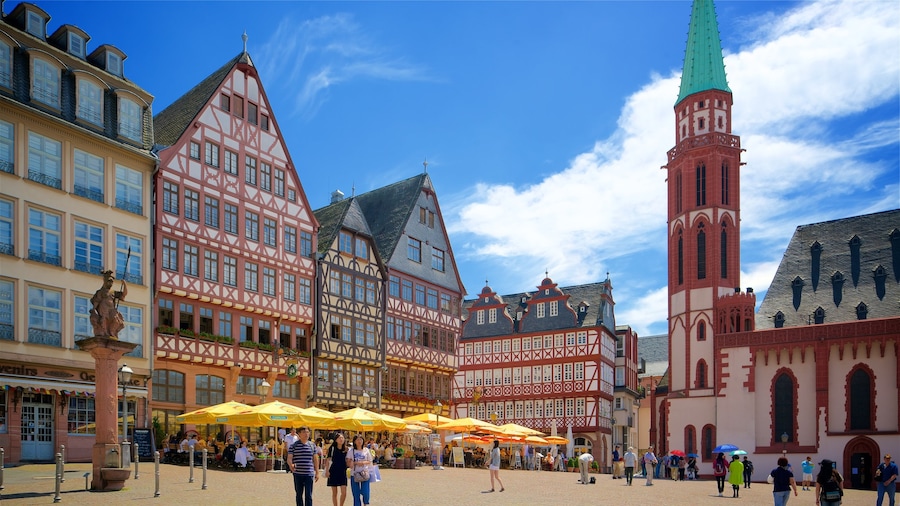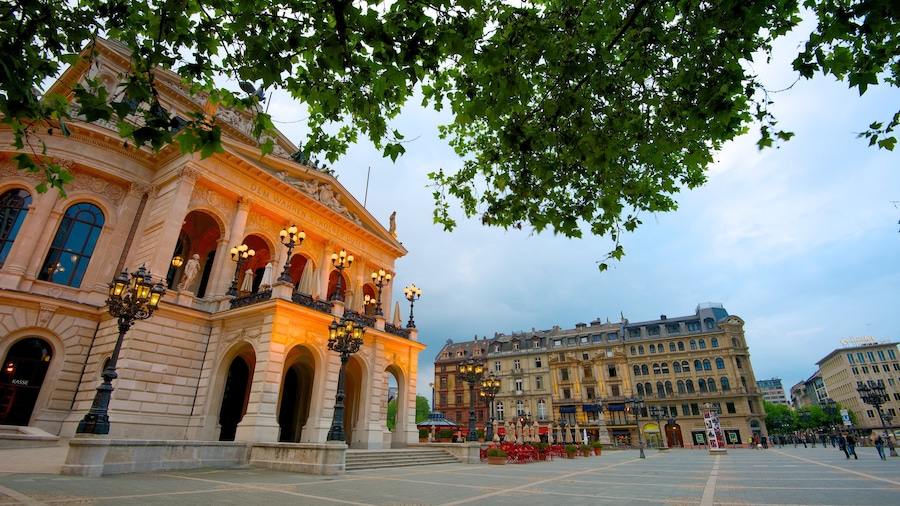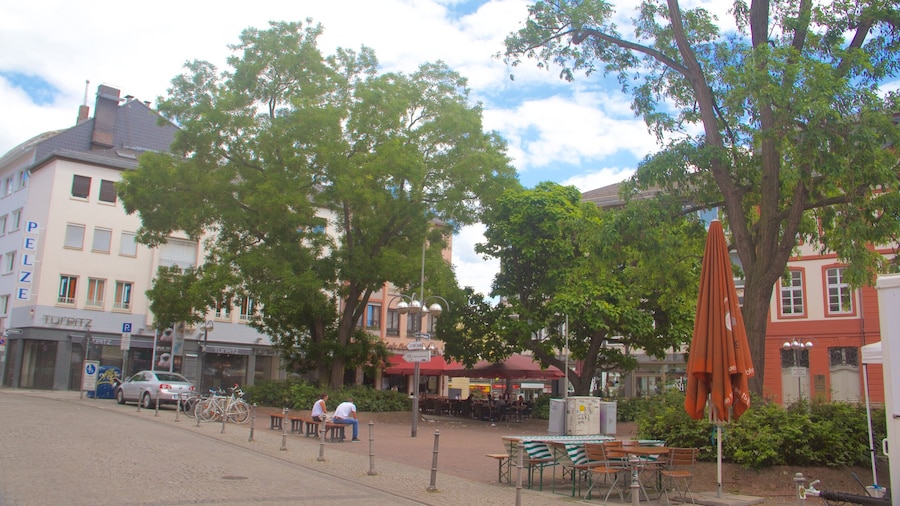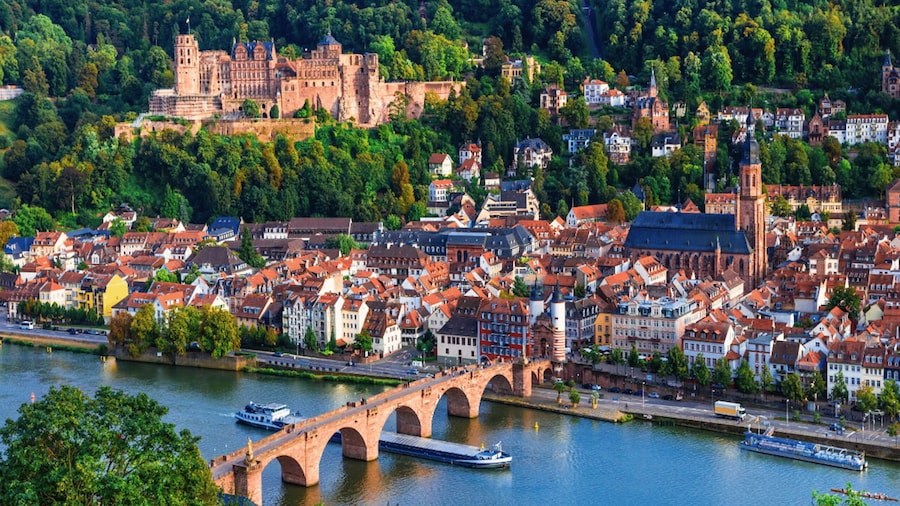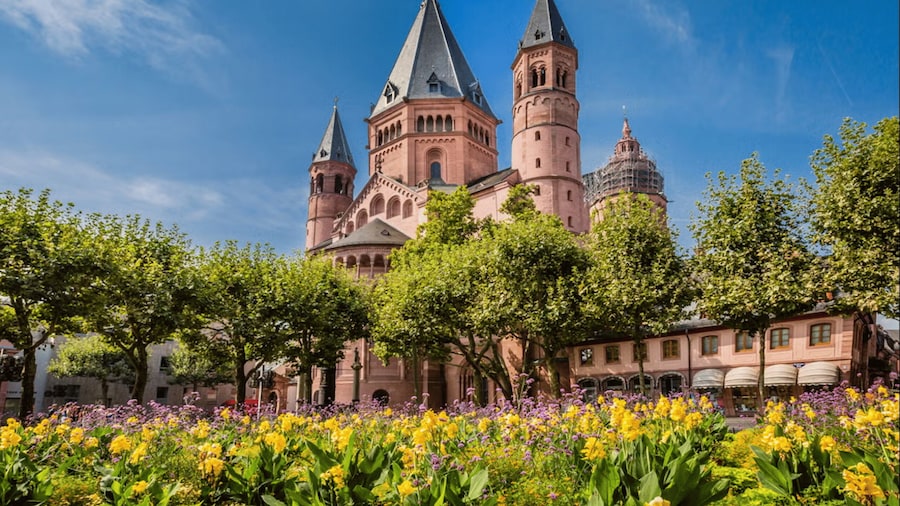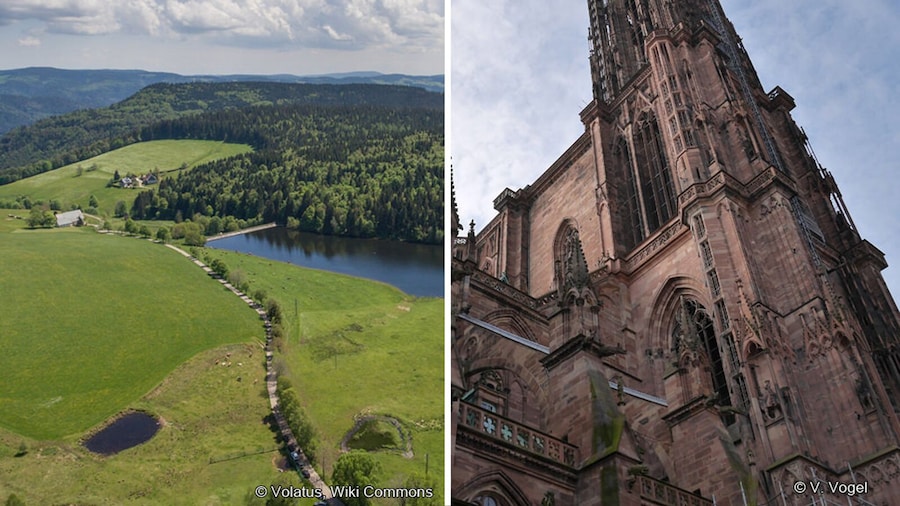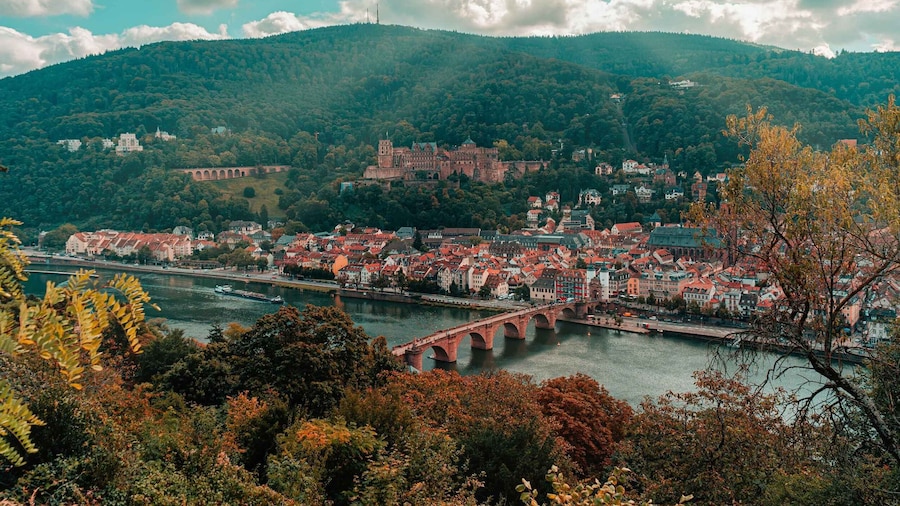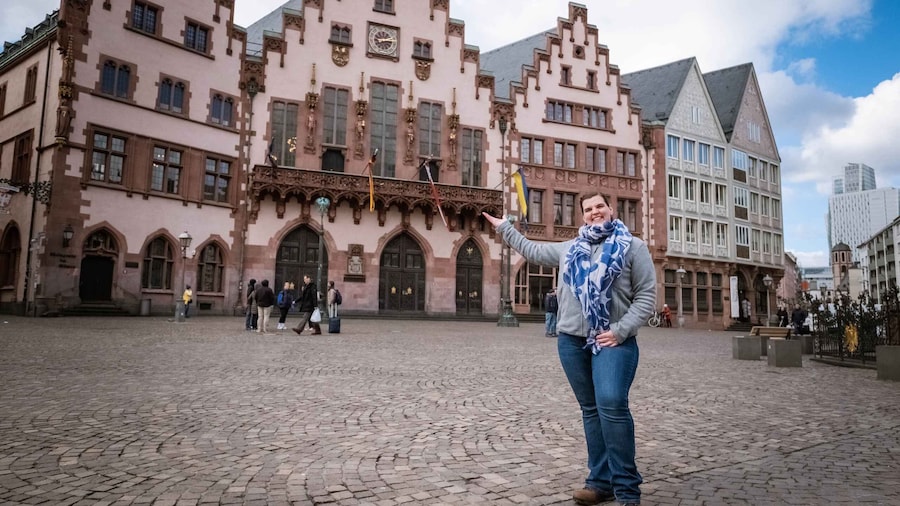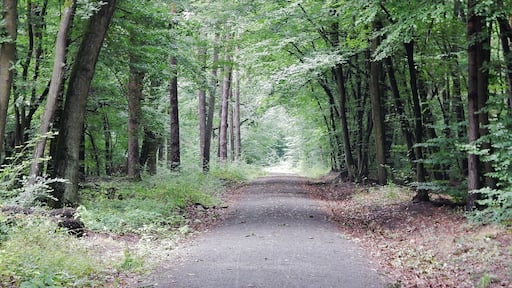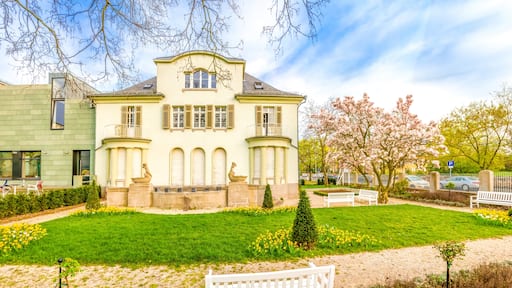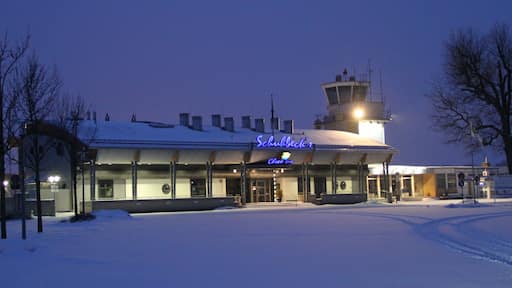The town of Mörfelden-Walldorf on the plain of the Lower Main is a tempting destination for your city trip because it's very close to Frankfurt am Main but still has lovely natural surroundings.
When the boundaries were redrawn in Hesse in 1977 Mörfelden and Walldorf were put together. Both towns have a history stretching way back. Mörfelden was mentioned by name as early as the 9th century in the Lorsch Codex, and Walldorf was founded in 1699 as the "Waldensian Colony at the Gundhof" by protestants fleeing Piedmont.
Your trip to Mörfelden-Walldorf will take you to the Museum of Local History in Mörfelden where the first thing to greet you is an old threshing machine standing in the courtyard. An old-world kitchen, the cobbler's workshop or a quaint pub will take you right into Mörfelden's past, from the Roman era to the time of the First and Second World Wars. The Museum of Local History in Walldorf brings to life the founding of Walldorf by religious refugees in the 17th century and presents their family trees and coats of arms.
Playful waves of metal and stacks of rectangles stand about in the park at the community centre. Old trees provide a backdrop for the objects of art. Every year in August Mörfelden-Walldorf becomes the stage for the Sculptures in the Park. During your mini-break visit this six-week art exhibition which was inaugurated in 1998: each year it surprises artists and art lovers with a new motto.
The small tower on the Waldensian Church in Walldorf has competition from the tops of the surrounding trees, but the red roof of the church is visible from miles away. The largest parish in Germany belonging to the Waldensian community, a protestant denomination, has its home here in Walldorf. Near the entrance there is a map of the town dating from 1702 showing how the area was laid out at that time. About nine kilometres of the Huguenot and Waldensian Trail runs directly through Walldorf and to the east of Mörfelden. This is a cultural walking trail which leads from Le Poët-Laval in France and Turin in Italy to Bad Karlshafen in northern Hesse. During a short trip into the past follow the history of the Waldensians on the display boards by the Oberwaldsee and Schnepfensee Lakes.
Your journey will take you into one of the last wetland areas in Hesse, the Mönchbruch Nature Reserve. This natural landscape, criss-crossed with ditches and marshes, is home to the Daubenton's bat and birds such as the black kite. Over 540 different plant species thrive in this recreational area, of which 60 are threatened with extinction. Ernst Ludwig, Landgrave of Hesse-Darmstadt, had the Mönchbruch Hunting Lodge built between 1730 and 1732 it was used for many years as the start point for par force hunting. The long half-timbered building with its red roof is currently being renovated privately, but it is lovely to look at from the outside when you're on your trip to Mörfelden-Walldorf.
